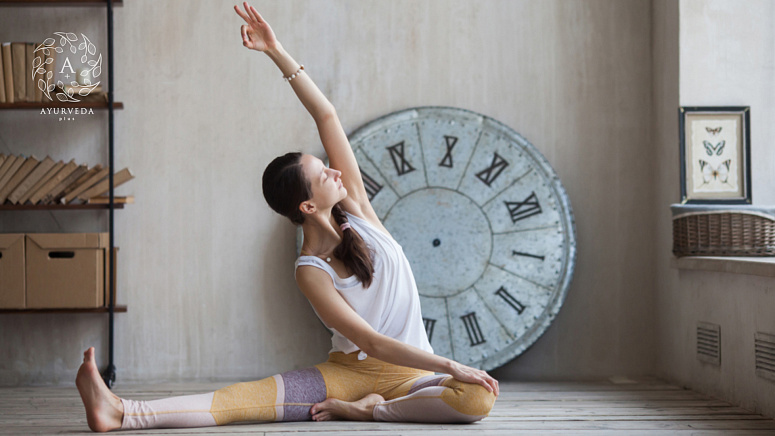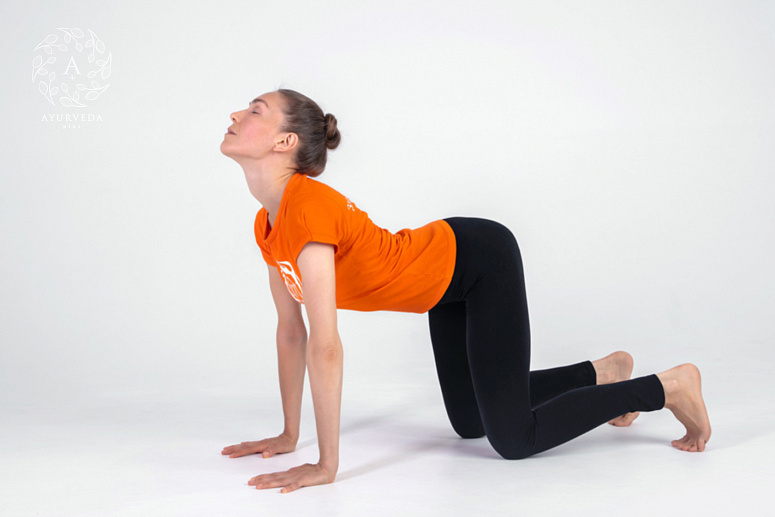As autumn arrives, so does the season of sniffles and coughs. While yoga emphasizes prevention over treatment, this time-tested practice also offers relief for those already battling a cold. Which poses are most helpful? What symptoms can they alleviate? And is it really wise to practice when you're feeling unwell?
Is it safe to do yoga while sick?
Those versed in Vedic wisdom will recognize the “Katha Upanishad” as one of scripture's most illuminating dialogues. At its heart lies the story of Nachiketa, a brahmin's son who stands before Yama, the cosmic judge. When a ritual oversight leads Yama to neglect his duties as host, he offers the young seeker a gift to restore balance. Nachiketa, with the clarity of one who sees beyond worldly rewards, asks what truly matters: "Tell me, O Lord of Death - who escapes the wheel of samsara?"
The King of Death revealed that liberation comes to those "who depart this life established in yoga." Yet somewhere along the way, we've distorted this sacred truth. Now we see practitioners popping pills to power through asana practice, or teachers leading classes while visibly sick - as if enlightenment could be earned through sheer stubbornness. Here's what we forget: Yoga is the art of conscious living, not mindless striving. When illness comes (as it does for every human), the real practice begins. It asks us: Is this movement healing or harming? Is this rest an act of wisdom or avoidance? The mat doesn't care if you show up. But your body? That's another matter entirely.
Doctors have differing views on this topic, so we'll present both sides of the argument - ultimately, the choice is yours to make.
Let's start with a fundamental yoga concept: Abhyasa (consistent practice). World-famous yogi Pattabhi Jois always maintained there's never a reason to stop practicing. With minor colds, continuing your practice can actually show true commitment to yoga.
Research shows that physical exercise boosts white blood cell production, which strengthens your immune system.
Movement is essential too. Unless your doctor orders complete bed rest, they'll likely recommend light activity - making gentle yoga perfect for recovery.
The right breathing exercises (pranayama) increase oxygen flow and can help clear nasal passages.
But what do opponents of practicing while sick say?
Critics emphasize Ahimsa (non-harming). This principle applies to both yourself and others. Even with a common cold, you risk infecting fellow students - something to consider before heading to the studio.
Don't force yourself to practice just to prove your willpower. Yoga isn't about pushing your limits - it's about finding balance and peace.
When practicing yoga while sick, steer clear of vigorous breathing exercises like Bhastrika and Kapalabhati. These powerful techniques can potentially push infections deeper into your respiratory system.
Exercise naturally elevates body temperature - something to be cautious about when you're already fighting a fever. This additional thermal stress may overwhelm your immune system.
Medical experts agree that even after cold symptoms disappear, your body needs approximately two weeks to fully recover. During this period, ease back into your practice gradually - your asanas might feel more challenging than usual.
However, some gentle yoga practices can actually provide relief during illness. Below, we'll share specific poses that may help alleviate discomfort.
Yoga for colds and flu: Poses and guidelines
Targeting the most common cold symptom - nasal congestion - this specialized sequence offers natural relief. Follow these guidelines for safe practice:
- Avoid inverted poses if experiencing headaches (the exception being Viparita Karani, known for its immune-boosting benefits)
- Incorporate restorative Savasana breaks as needed throughout your practice
The following sequence is designed for cold recovery. Listen to your body - take Child's Pose or short Savasana rests whenever necessary.
Begin by centering yourself: sit comfortably, close your eyes, and practice diaphragmatic breathing (expanding your abdomen on inhalation, gently contracting on exhalation). After several rounds, begin the sequence.
- Marjariasana (Cat-Cow Flow): Gently arch and round your spine for 10 breath cycles to warm up.
- Vajrasana (Diamond Pose): Ground yourself with several minutes of mindful breathing in this stable position.
- Simhasana (Lion's Breath): This powerful pose helps fight infection. Exhale forcefully while stretching your tongue downward and gazing at your third eye.
- Ustrasana (Camel Pose): Carefully arch backward, reaching for your heels. Note any contraindications for this backbend.
- Matsyendrasana (Seated Spinal Twist): Perform on both sides, then rest to allow detoxification.
- Paschimottanasana (Seated Forward Bend): Ancient texts praise this pose's universal healing properties.
- Viparita Karani (Legs-Up-the-Wall): Include this gentle inversion if you have sufficient energy.
- Complete your practice with a rejuvenating Savasana before moving to breathing exercises.
- Agnisara Kriya (Fire Essence Practice): Begin in a comfortable seated position. After a full inhalation, gently pulse your abdominal muscles during the breath hold. When ready to exhale, release the movement and breathe out normally. Rest with eyes closed for a few recovery breaths before repeating. This cleansing technique supports immune function and respiratory health.
- Ujjayi Breathing: Incorporate this ocean-sound breath if you're feeling up to it - its warming, vibrational quality is especially soothing for irritated throats.
Finish with a mindful Savasana, using this time to check in with your body. Notice any changes in your congestion, energy levels, or overall comfort.
Yoga serves as powerful preventive medicine - regular practitioners typically experience 50% fewer colds than non-practitioners. A knowledgeable teacher can craft sequences specifically to bolster your natural defenses.
Complement your practice with Ayurvedic wisdom: Simple rituals like morning cold water splashes can gently strengthen your resilience against seasonal illnesses.
When you're too unwell for physical practice, remember yoga's broader dimensions: Study philosophical texts, immerse yourself in sacred chants, or explore yoga documentaries. In Iyengar's profound words, "The mat is merely where we prepare - true yoga happens in life."
Illness can become sacred introspection time. Through meditation, we might uncover deeper patterns contributing to our condition. Embrace this chance for self-discovery while maintaining connection - personal transformation ripples outward.
Iyengar's own journey reminds us of yoga's gradual unfolding - after six years of dedicated asana, his guru finally introduced pranayama. Today we're blessed with immediate access to these teachings - may we honor this gift through wise practice.

